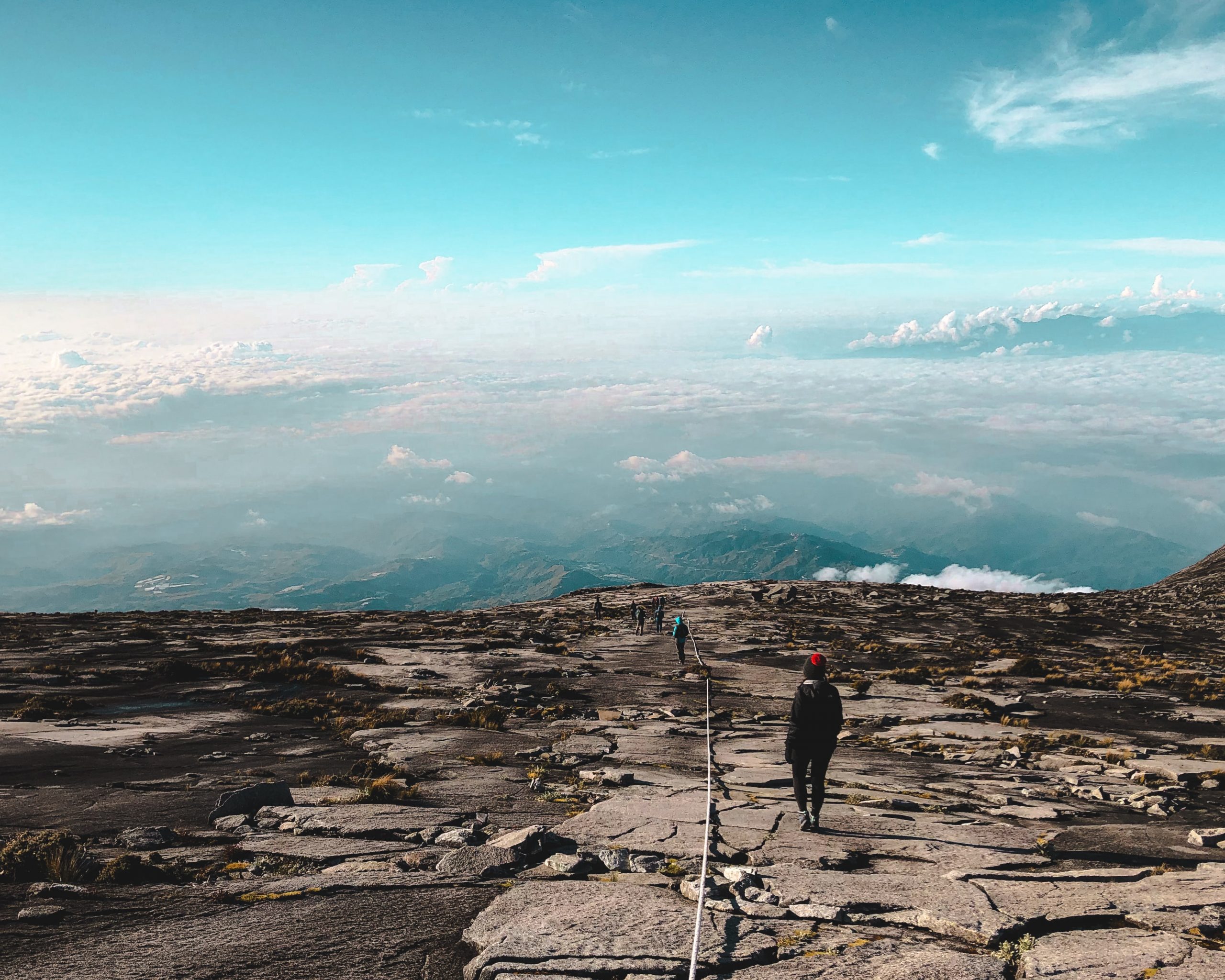
Cultural Heritage
Published on Nil | by flyingdusun.com
|
Sabah is famous for her friendly and hospitable people. There are a staggering 32 different ethnic entities, each of which speaks a different language, plus another 80 or so dialects or variants from the main languages – see also our language/ethnic entity chart. The largest group in Sabah comprises the Kadazandusun who are of Dusunic origin. The Bajau are the second largest group and the Paitanic the third largest. The largest non-indigenous group is made up of Chinese. All these people are, since the formation of Malaysia, Malaysian citizens and live together in harmony despite their different ethnic background and various creeds – a fact Malaysia can be truly proud of. Most of the Dusunic and Paitanic people are nowadays Christians, with a minority still adhering to their ancient animistic faith. The Bajau are Muslims, and the Chinese Buddhists and Christians. Most Chinese have settled in towns, where they have their businesses, but some live in the interior and are farmers. The Bajau are coastal dwelling people while the Paitanic people live in the far interior. Kadazandusuns can be found throughout Sabah. |
 |
|
|
|
||
| Kadazandusun
The largest indigenous group is that of the Kadazandusun, a term created to include all indigenous people of Dusunic origin. The Kadazan in this group feature strongly. Originally from the area of Penampang, close to the state capital Kota Kinabalu, and the Papar area, they were the first to come under the influence of Christian missionaries. Already in 1850’s the Kadazan of the coastal areas where thus schooled and with education came political awareness. The various Dusun groups of the north (such as the Rungus of the Kudat area), the interior (Tambunan area) and around the foothills of Mt Kinabalu were only ‘discovered’ much later when the British North Borneo Chartered Company was already well established. Many areas were effectively only opened up after WWII and finally, during the log boom of the 70’s and 80’s most areas were somehow made accessible by roads. Yet it is intriguing to know that even in the Penampang district, along the Crocker Range you can find villages so remote that one to two days jungle trekking is required to join them. Many of these villages were visited by Christian missionaries in the 50’s and what education the missionaries started has continued under Malaysia – most of these villages have primary schools! In the past the Dusun people lived a little by outsiders disturbed life. Their societies are defined by close kinship, with the family being the most important unit, followed by the village. Occasional headhunting occurred, more for the sake of defence than for reasons of bravery but the motives for this in Borneo widespread custom were varied. In some Dusun areas headhunting was arguably more of a sport than merely for defence…! Nowadays these people are formidable hosts and as a traveller one might well get the impression that they like nothing more than a hefty party lasting for the better part of a week, during which rice wine flows rather liberally. It is true that travellers are a formidable excuse for a happy gathering, but once the strangers have moved on, life resumes its cycle which is still very much marked by rice planting and hunting, and maybe the work in orchards and plantations. Many of the remoter Dusun villages are surrounded by rubber, banana, tobacco and coconut plantations, effective cash crops in a time that pushes everybody more and more into a consumer society. The weekly tamu – or open air markets – are still very important not only to the Dusun, but to all people in Sabah. More than mere trading places for victuals and other goods the tamu still serves as a gathering where you exchange news and gossip alike, where you can meet friends and make new acquaintances. If you wish to know in which village there will be a wedding during the upcoming week-end, you have to go to the tamu! The most important celebration of the Kadazandusun is the harvest festival, called Pesta Ka’amatan. It is held during the month of May each year, and culminates in two public holidays 30 and 31 May. It has its root deep in the mystical origin of the once semi-nomadic agrarian Dusun tribes – believe it or not, but the true origin of most of Sabah’s ethnic people is not yet fully determined, it is only for sure that they are not the original inhabitants of Borneo… If you want to maximise your cultural experience, May is a good time to be here, but Christmas in the villages also offers a great cultural exchange, just as Chinese New Year. In our feature section you will find several articles pertaining to the mystical origin of the Kadazandusun, and also on the Pesta Ka’amatan, and in our gallery section there are some photographs of Sabah’s people. |
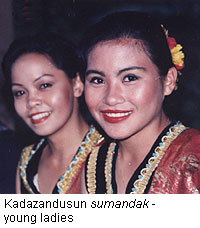 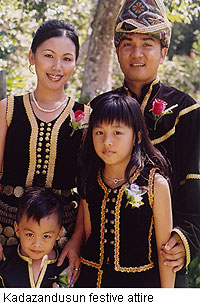    |
|
|
|
||
| Murut – Paitanic Groups
In the rugged interior of southern Sabah, along the border with Kalimantan you will find the Murut people. The Murut are of Paitanic stock, though there are many sub-entities and languages so varied that certainly more studies are require to find out if not some of the Murut belong to the original inhabitants of Borneo, or at least to the very first settlers. Murut means ‘people of the hills’ and they can be found right up to Keningau in central Sabah but they have indeed never cultivated the plains. Normally their settlements were on hills close to major rivers, and traditionally the Murut live in longhouses. The Dusun also used to live in longhouses, but nowadays only the Rungus in the north continue to do so, together with some of the Murut. The Murut homeland, rich in timber, has been damaged severely by logging since the 70’s, and subsequent ideas of the modern world and how one should live now, combined with missionary influences have much changed these once so remote people. Thus Murut villages tend to be a bit devoid of life, with most inhabitants working either in towns or the forest industry as labourers. The Murut, once fierce headhunters and reputedly the last people in Sabah to give up this custom were already during British administration known to make good soldiers and police men, and to this date a lot of Murut seek employment with Malaysia’s armed forces. Notwithstanding the Murut have an amazingly vibrant cultural heritage which, with a rediscovered awareness of cultural identity has started to emerge slowly. As with traditions the world over, it seems to be unavoidable nowadays that there must be a very good economic reason to it for it to survive. With eco-tourism making slowly its way inwards the Murut have started realising that their culture indeed has a monetary value and some efforts have been made to conserve their varied, age-old customs and traditions. The Pesta Kalimaran – the Murut harvest festival – is now an integral part of the Sabah Yearly Calendar of Events. It is also celebrated during May and the Tenom Murut Cultural Centre comes alive with traditional sports and dances. The Murut traditional costumes are usually heavily embroidered with tiny glass beads, and the men adorn themselves splendidly with the feathers of Argus peasant and hornbills. The Tagol Murut, one of the main groups, are particularly famous for their exuberant display of bride wealth, and weddings are grand affairs that include entire villages and last for a week. In our modern times week-long parties are arguably not very productive but for the Murut these come-together’s play an integral role in their life and perpetuate their proud culture. If you are invited to a Murut wedding – especially a Tina’uh in the interior – do not decline! |
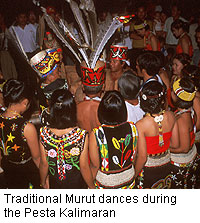  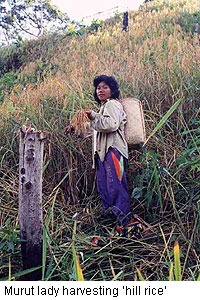 |
|
|
|
||
|
Bajau People The Bajau were once known as the sea-gypsies, and indeed, they used to live their entire life on boats, the Lipa-lipa. They were true nomads, and extremely skilled in navigating the seas even though they had no compass on their small, richly decorated boats. The Bajau only came to land to collect fire wood, to get water, and to bury their dead. However, over the past few hundred years some Bajau have settled on the main land, particularly along the west coast of Sabah. And while the sea Bajau families tend to be small, the land Bajau have enlarged their families. Even to-day, a Bajau house tends to be large and spacious. They are still mainly fishermen, and often build their houses on stilts into the sea or rivers, such as the Bajau of Kg Mengkabong. Having had long contact with Chinese traders, but also with European merchants, the Bajau have evolved particularly colourful costumes, with elaborate accessories. A Bajau lady in her full ceremonial dress cannot but move extremely graceful! The Bajau have been Moslems for a long time, and through intermarriage with the ruling Bruneis the settled Bajau have adopted many of their cultural aspects in dance and music. In Kota Belud, the Bajau are also famous for being skilled horsemen, and for being the only ethnic entity in Sabah to have horses for that matter. The annual Tamu Besar in Kota Belud pays particular homage to the colourful Bajau culture on the west coast of Sabah, and if you happen to be in Sabah during that time make sure not to miss out on that opportunity!
|
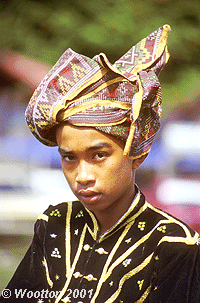 Bajau boy in traditional attire Bajau boy in traditional attire Pesta Lepa-Lepa, Semporna Pesta Lepa-Lepa, Semporna |
|









